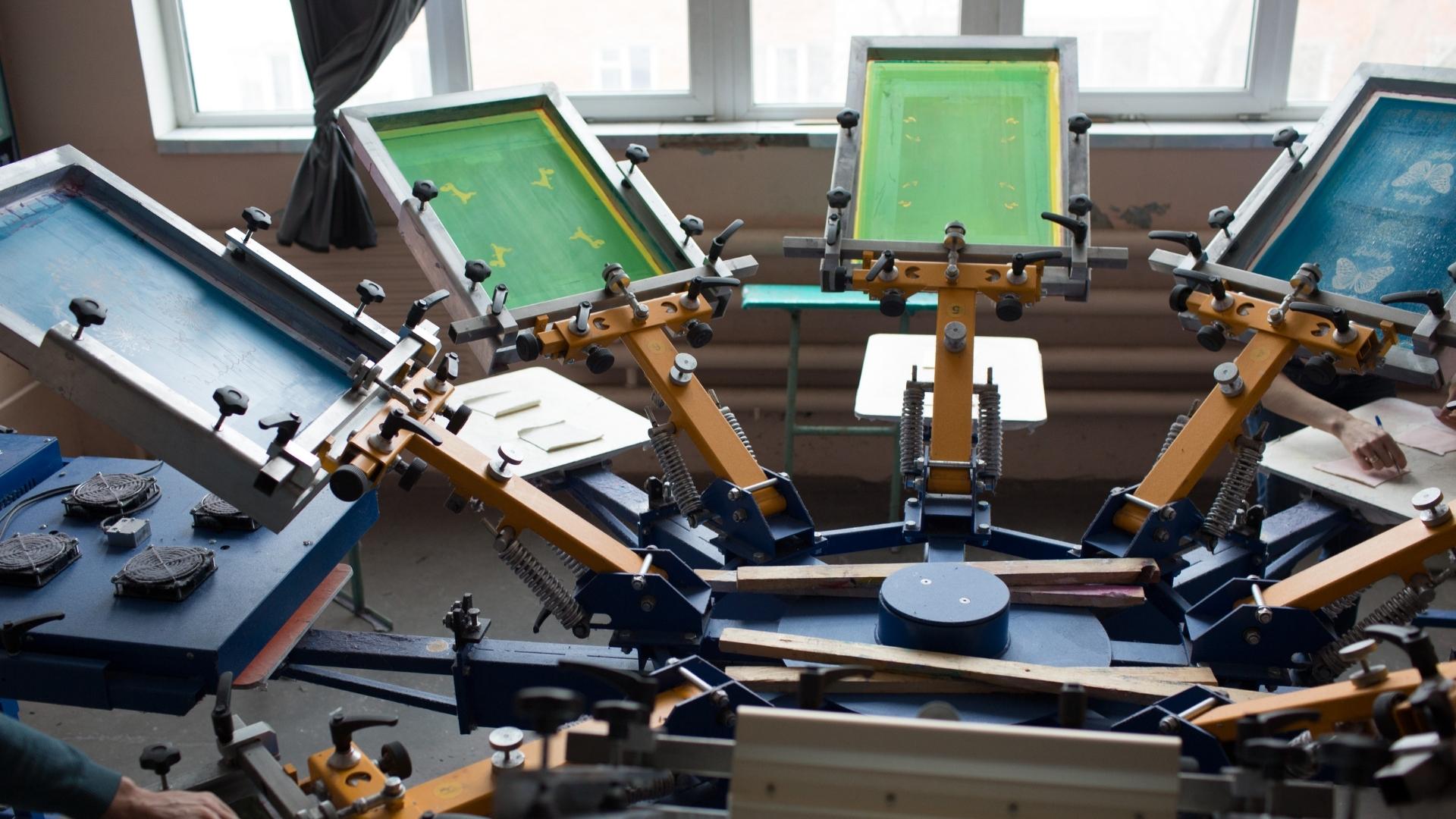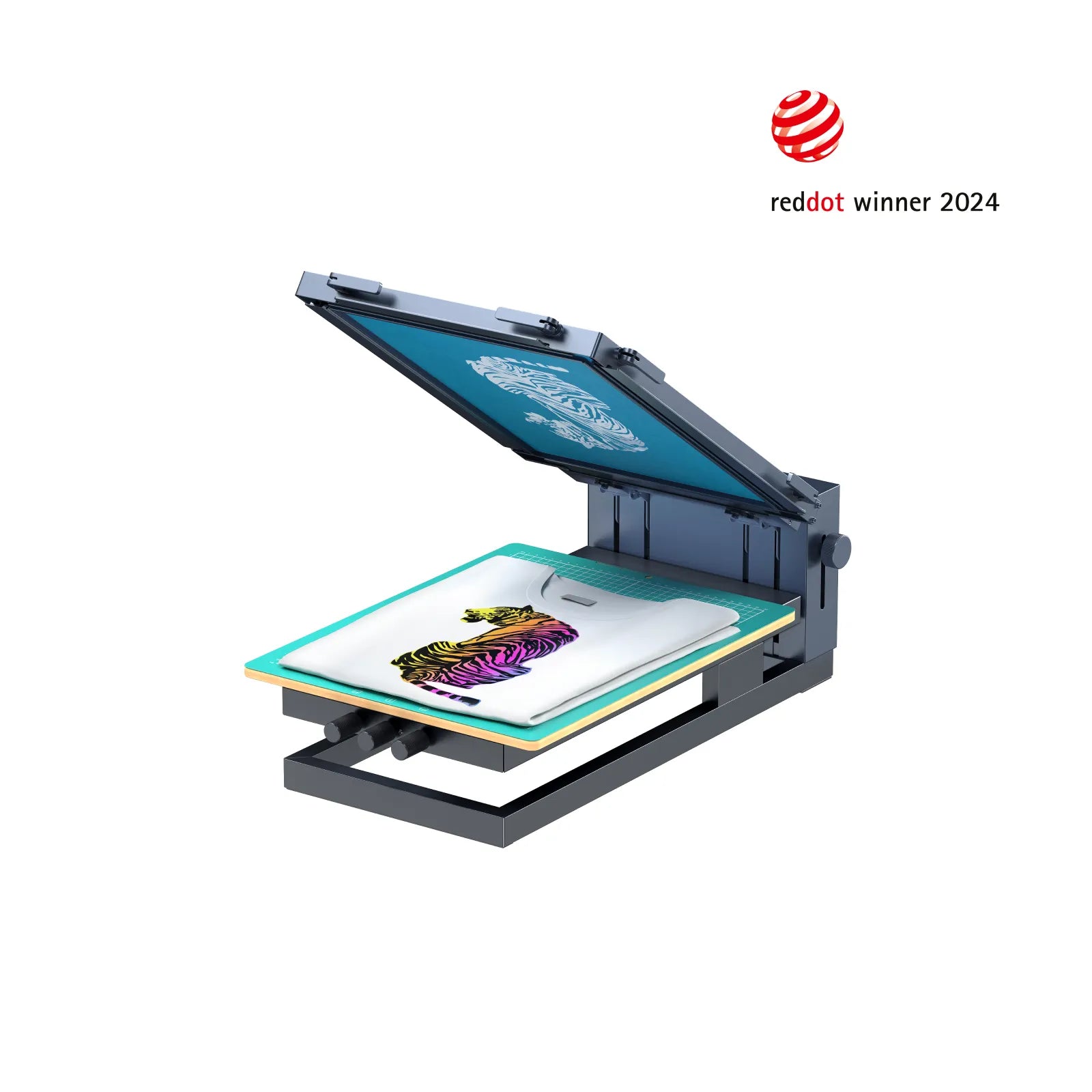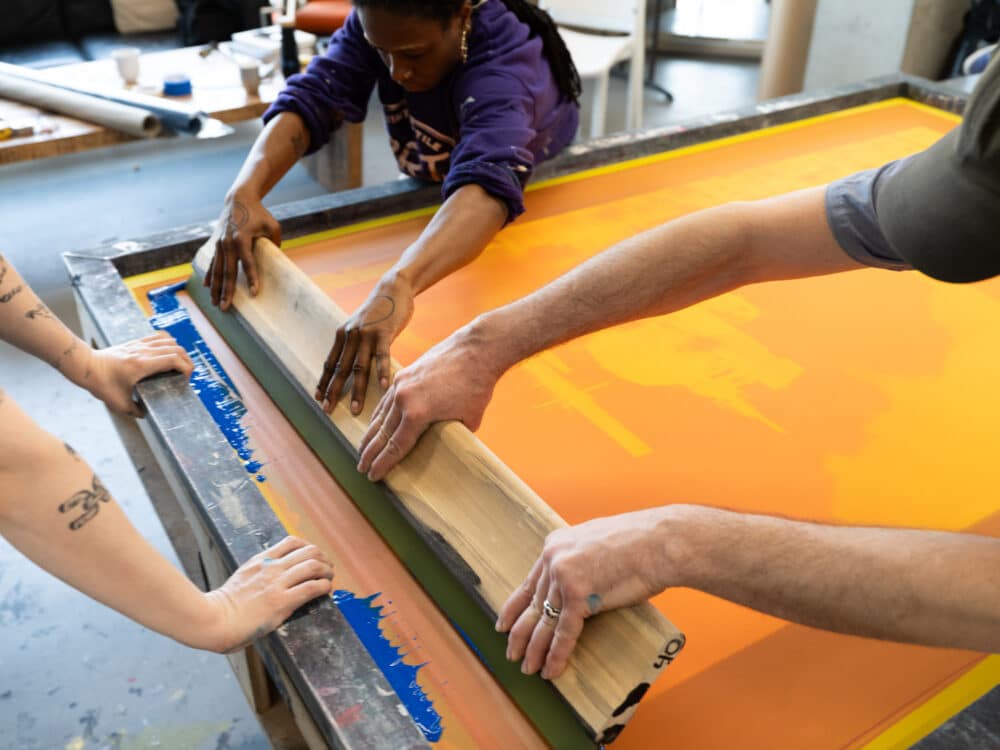The Essential Guide to Understanding Screen Printing and Its Versatile Uses
Screen printing has a rich background that goes back to ancient times, advancing into an innovative technique made use of throughout various industries today. This overview checks out the ins and outs of the screen printing procedure, detailing its applications in fashion, home, and advertising design - 10:9 Design LLC Company. Understanding these basics can open up creative potential for both industrial and creative jobs. The adhering to sections will certainly expose necessary pointers and techniques to improve one's screen printing undertakings
The Background of Screen Printing
Although screen printing has roots that map back centuries, its advancement mirrors the creative and technological advancements of different societies. Coming from old China, the technique was at first utilized for enhancing fabrics and later spread to Japan, where it came to be essential to Ukiyo-e woodblock printing. The technique moved to Europe in the 18th century, where it acquired popularity among artisans and business printers. The invention of photo solution in the 20th century reinvented screen printing, enabling more complex designs and higher efficiency. Musicians like Andy Warhol even more thrust its appeal, making use of the medium to produce famous works that blended commercialism and fine art. By the late 20th century, screen printing had established itself as a functional strategy, used in fashion, advertising and marketing, and great art. Today, it remains to advance, incorporating digital modern technology and increasing its applications throughout different industries.
The Screen Printing Refine Explained
Screen printing transforms artistic visions into substantial designs through a collection of specific steps. A picture is produced and then transferred onto a screen, commonly made of fine mesh material stretched over a structure. A light-sensitive emulsion is put on the screen, which is exposed to light, hardening in areas not covered by the photo. After cleaning out the unhardened emulsion, a stencil is created.
Next, the screen is placed over the substratum, whether it be fabric, paper, or one more material. Ink is after that pressed through the open locations of the pattern using a squeegee, depositing the layout onto the substrate listed below. This process can be duplicated for multiple colors, needing separate screens for every tone. The printed thing is cured utilizing heat to guarantee the ink sticks appropriately, resulting in a long lasting, dynamic design ready for usage.
Kinds Of Screen Printing Techniques

Additionally, specialty methods, such as discharge screen printing, remove dye from the fabric to create softer prints, while aluminum foil screen printing uses metallic foil to accomplish a shiny coating (10:9 Design Screen Printing Texas). Each method provides unique characteristics, catering to numerous imaginative needs and production scales, eventually broadening the possibilities within the screen printing domain name
Applications of Screen Printing in Different Industries

Furthermore, the signage and marketing sectors make use of screen printing for developing attractive displays and banners. This approach enables bold shades and detailed layouts that capture attention. In electronic devices, screen printing is used for applying conductive inks to motherboard, crucial for component links. The home design market welcomes screen printing to create distinctive styles on textiles and wall surface art. Overall, screen printing acts as a critical device across diverse fields, enhancing items with individualized and aesthetically enticing graphics.
Tips for Effective Screen Printing Projects
While undertaking a screen printing job, cautious attention to detail can substantially improve the last result. Selecting premium products is essential; this consists of the screen, inks, and substrates. Using proper mesh counts can impact ink deposition and detail resolution. Prep work is similarly vital; comprehensive cleaning of displays and proper exposure times ensure crisp prints.
Next off, accurate enrollment is vital for multi-color prints. Making use of alignment devices can assist achieve specific layering. Furthermore, testing prints on scrap materials before production aids recognize possible problems without throwing away resources.

Frequently Asked Inquiries
What Products Are Finest for Screen Printing on Fabric?
Cotton and polyester blends are perfect for screen printing on material due to their longevity and ink absorption. In addition, specialized check here materials like silk or canvas can create one-of-a-kind structures and finishes, boosting the general style top quality.
Just how Do I Clean and Maintain Screen Printing Tools?
To cleanse and keep screen printing devices, one must frequently clean displays with suitable solvents, evaluate mops for wear, oil moving components, and shop all things in a completely dry, dust-free environment to extend their lifespan.
What Are the Environmental Influences of Screen Printing?
Screen printing can have significant environmental impacts, consisting of chemical waste from inks and solvents, water use during cleansing procedures, and power consumption. Eco-friendly materials and lasting methods are important for minimizing these unfavorable impacts.
Can Screen Printing Be Done at Home Effectively?
Screen printing can be effectively done at home with the right products and techniques. Hobbyists can develop high quality prints, though success depends upon their skill level, equipment, and understanding of the process involved.
What Are the Prices Related To Beginning a Screen Printing Service?

Starting a screen printing company includes costs for devices, materials, and office. First costs commonly range from a couple of hundred to a number of thousand bucks, depending upon the scale, quality of machinery, and desired manufacturing capacity.
Screen printing has a rich history that dates back to old times, progressing into a sophisticated technique made use of throughout various markets today. One more method, rotary screen printing, uses round screens, assisting in continual printing on material rolls, thereby enhancing efficiency for large manufacturings. Furthermore, specialty techniques, such as discharge screen printing, get rid of color from the material to create softer prints, while aluminum foil screen printing applies metal aluminum foil to attain a shiny coating. In the style market, screen printing is commonly made use of to develop dynamic designs on clothing, making it possible for brand names to showcase their special designs. Cotton and polyester blends are excellent for screen printing on material due to their toughness and ink absorption.